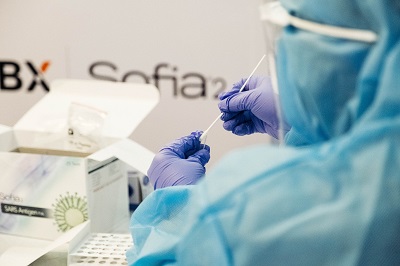Documents required for Class II medical device FDA certification application and how to prepare them.
Release time:2024-08-06 11:09:37
The author:
source:
Preparing a thorough and compliant 510(k) submission for FDA certification (clearance) of a Class II medical device requires gathering and organizing several key documents. These documents are crucial to demonstrating substantial equivalence to a predicate device and ensuring compliance with FDA regulations.
Preparing a thorough and compliant 510(k) submission for FDA certification (clearance) of a Class II medical device requires gathering and organizing several key documents. These documents are crucial to demonstrating substantial equivalence to a predicate device and ensuring compliance with FDA regulations. Here’s a detailed list of the documents required and how to prepare them:
Required Documents for FDA Certification Application:
Device Description and Specifications:
- Purpose: Clearly describe the intended use of your device, including its indications for use and any specific patient populations.
- Specifications: Provide detailed technical specifications, drawings, and schematics that outline the design and construction of your device.
Performance Testing Data:
- Purpose: Conduct performance testing to demonstrate how your device performs compared to the predicate device(s) in terms of safety and effectiveness.
- Types of Tests: Include results from testing such as mechanical testing, electrical safety testing, biocompatibility testing (following ISO 10993 standards), and any other relevant performance evaluations.
Biocompatibility Information:
- Purpose: Provide data to demonstrate that the materials used in your device are biocompatible and safe for their intended use.
- Testing Data: Include biocompatibility testing reports and summaries that comply with ISO 10993 standards, covering cytotoxicity, sensitization, irritation or intracutaneous reactivity, and systemic toxicity.
Clinical Data (if applicable):
- Purpose: Submit clinical data if necessary to support claims of safety and effectiveness, particularly if your device differs significantly from the predicate device(s).
- Study Protocols and Reports: Include detailed study protocols, clinical investigation reports, and summaries of clinical data that demonstrate the device’s performance and safety in clinical settings.
Software Documentation (if applicable):
- Purpose: Detail the functionality of any software components associated with your device and how they support its intended use.
- Software Requirements and Design: Provide documentation on software requirements, design specifications, and validation processes to ensure functionality and safety.
Labeling and Instructions for Use:
- Purpose: Develop labeling that complies with FDA requirements, providing clear and accurate information for users, including indications for use, contraindications, warnings, precautions, and instructions for use.
- Labeling Format: Follow FDA guidelines for labeling format, content, and language to ensure compliance and clarity.
Quality System Information:
- Purpose: Document your Quality System Regulation (QSR) compliance efforts, demonstrating that your manufacturing processes and quality systems meet FDA standards.
- Quality Assurance Procedures: Include procedures and documentation related to manufacturing controls, quality control, packaging, labeling, and storage.
How to Prepare These Documents:
- Start Early: Begin gathering and organizing required documentation as soon as possible to allow ample time for preparation and review.
- Consult Experts: Consider consulting with regulatory consultants or experts who specialize in FDA submissions to ensure all necessary documents are comprehensive and compliant.
- Follow FDA Guidance: Refer to FDA guidance documents specific to your device type and intended use throughout the preparation process to ensure adherence to current regulations.
- Document Control: Maintain thorough documentation control, ensuring all versions of documents are properly labeled, dated, and stored securely.
Additional Considerations:
- Regulatory Strategy: Develop a strategic approach to demonstrating substantial equivalence and addressing potential regulatory concerns early in the preparation process.
- Review and Revise: Conduct thorough reviews of all documentation to ensure accuracy, completeness, and compliance with FDA requirements before submission.
- Prepare for FDA Review: Anticipate potential requests for additional information (AI letters) from the FDA and be ready to respond promptly to avoid delays in the review process.

Contact Us:
Whatsapp or Wechat:+86 15816864648;email address:hito.lin@grzan.cn
.png)
.jpg)
.png)

.png)